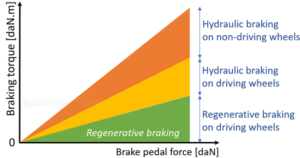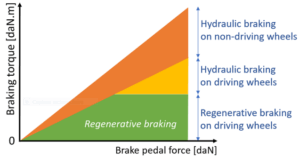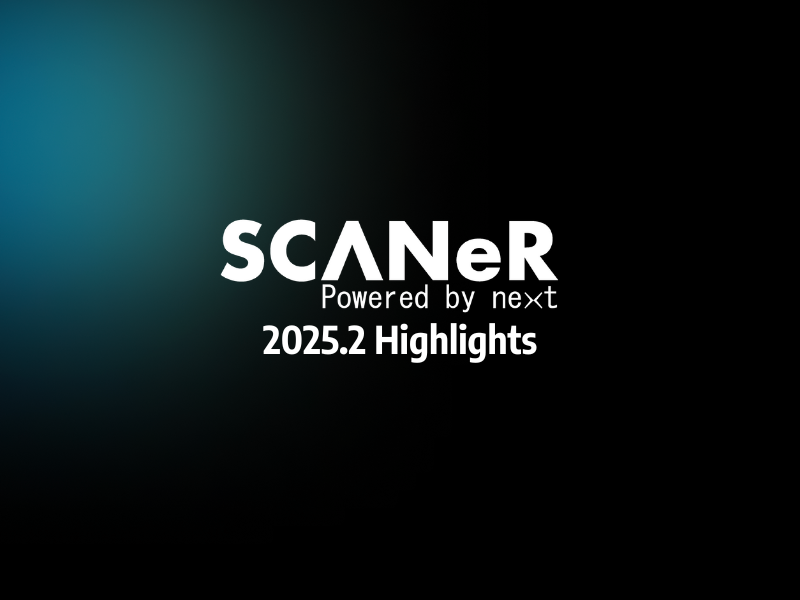AVSimulation is proud to announce that SCANeR 2025.2 (Powered by Next), the latest major version of our automotive simulation software package, is now available. It includes many new features and enhancements to meet the needs of the most challenging simulation applications for engineers and scientists. With the growing importance of electric vehicles in the automotive industry, this release focuses on strategic enhancements designed to offer more realistic and comprehensive EV simulation capabilities.
Our goal is to support users in conducting more accurate and immersive driving tests, particularly for driver behavior studies and driver-in-the-loop simulations.
Smarter EV simulation with an upgraded CALLAS model
SCANeR 2025.2 takes electric vehicle simulation to the next level with major enhancements to CALLAS, our vehicle dynamics model. CALLAS now offers expanded support for a wide range of electric architectures and advanced EV-specific functions, making it easier than ever to simulate real-world electric driving behavior.
These improvements unlock powerful new possibilities such as One pedal drive mode and regenerative braking with various user settings.
Reproducing realistic driving behavior with One Pedal Drive mode
Electric vehicles bring new driving experiences — one of the most distinctive being One Pedal Drive mode. Widely adopted across the EV market, this mode allows the driver to decelerate and regenerate energy simply by lifting their foot off the accelerator.
In CALLAS, this functionality has been significantly enhanced to better reflect real-world behavior. Users now have greater flexibility to customize how the electric motor reacts to accelerator pedal input. This includes precise control over deceleration and energy regeneration by defining when negative torque is applied.
New regenerative braking feature with various user settings
As part of our commitment to delivering a comprehensive EV simulation experience, SCANeR 2025.2 introduces a new regenerative braking feature with parallel, series, and custom control modes. This addition empowers users with greater control and flexibility, enabling the simulation of a broader spectrum of realistic driving scenarios and vehicle behaviors:
- In parallel mode, the brake pedal simultaneously activates the brake pads and controls the electric machine

- In series mode, electric braking is prioritized before mechanical braking takes over upon saturation.

- In custom control mode, the customer can describe the behavior desired after the activation of the brake pedal.
By replicating these architectures in a physics-based simulation environment, SCANeR now makes it easier than ever to simulate a broad range of energy recovery strategies, vital for both comfort and efficiency.
Batteries and components – a more accurate energy picture
Accurate battery modeling is key to realistic EV simulation. In CALLAS, two new high-voltage battery models have been added to broaden the range of available simulation options:
- The Infinite Battery Model, designed for test cases where battery limitations should not be a constraint
- The Thevenin Battery Model, widely used across industry and research for its ability to simulate voltage variations with high accuracy
The basic battery model has also been improved, now allowing users to define min and max State of Charge (SoC) for better hybrid simulation.
In parallel, the electric drivetrain component library has been enriched with additional motor and battery samples. This gives users access to a broader selection of predefined assets, helping accelerate vehicle setup without compromising simulation relevance.
And more to explore…
In addition to these key improvements, SCANeR 2025.2 Powered by Next introduces several other updates across the platform: enhanced electric motor configuration, improved data analysis with Computed Channels, allowing users to perform advanced operations between simulation variables, and ongoing refinements to simulation usability and compatibility.
Experience the future of automotive simulation with SCANeR 2025.2!
For a detailed overview of all updates, please read the Release Note.
For more information—or to find out how SCANeR can support your EV development roadmap—our team is here to help.


